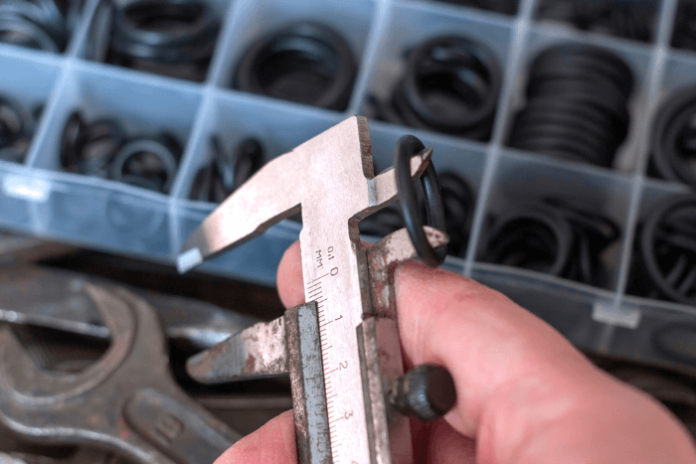There are many variables that have an impact on specifying the right o-rings for a given application. Are the o-rings intended for use in the medical or automotive industries, or is this an aerospace application? Line pressure requirements also have their own parameters, as does whether the o-rings are intended for use in primarily static or dynamic applications.
In this guide, we’ll examine a few of the factors you should consider before picking out o-rings to meet your specific needs.
Static vs. Dynamic
O-rings intended for use in a dynamic application must not only withstand the variable pressures produced by flow but also resist extrusion when one part of the assembly moves relative to another. Static applications simply hold pressure across a fitting or joint that does not move, so there is not as much concern here about o-ring extrusion, but all other duty requirements must be met or exceeded.
Industry-Specific Requirements
O-rings must be manufactured to exact standards, not just in regard to their dimensional specification and durometer hardness, but also with regard to their composition with an eye toward their intended field of use. There are a different set of challenges in the medical field than there are, for example, in automotive.
Medical
Medical-grade seals must meet non-negotiable standards for patient safety. Silicone and EPDM rubber seals meet or exceed them all for many reasons. Ozone, UV, and X-ray exposure can produce cracks, extrusions, and other failures in o-rings made from inadequate materials. Many manufacturers produce medical-grade components in dedicated cleanroom environments to eliminate all contaminants.
Automotive
Automotive applications have their own requirements, chiefly in regard to the o-ring’s resistance to solvents and petroleum-based chemicals. But these o-rings must also serve well in environments that regularly produce both high pressures and high ranges of temperature fluctuation.
Most automotive o-rings must be engineered to withstand positive crankcase pressure. Some, however, must be built to run on a negative crankcase pressure. It is critical to specify precisely what is needed in the intended installation.
A different design and specification must be at least considered for this difference between positive and negative pressure, and it may impact not just o-ring size but also what material is used, how pliable it is, and more.
Seal design and construction makes an enormous difference in frictional losses. Therefore, it is crucial to get o-ring selection just right. With the auto industry’s ever-increasing emphasis on efficiency, it is entirely possible that the right o-rings could make all the difference.
Working With the Right Partner
The right supplier can make all the difference. The variety of options out there can make it hard to choose the right o-rings for your specific application, but if you have a clear idea of the tolerances you’ll require, a well-stocked vendor can always help you narrow down your choices.
A small component can make a big difference in your operations. When you spend the time to find the right parts from the right vendors, you’ll enjoy long-lasting benefits for your machinery.
You might also be interested in reading about picking a career option in the engineering industry







